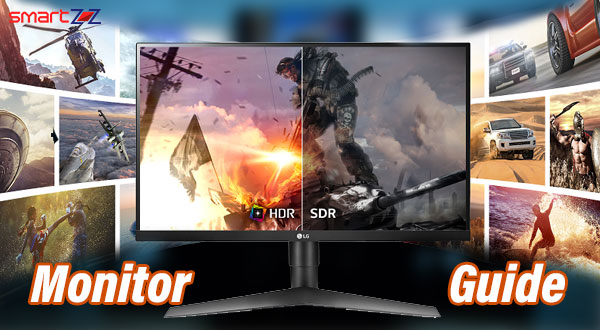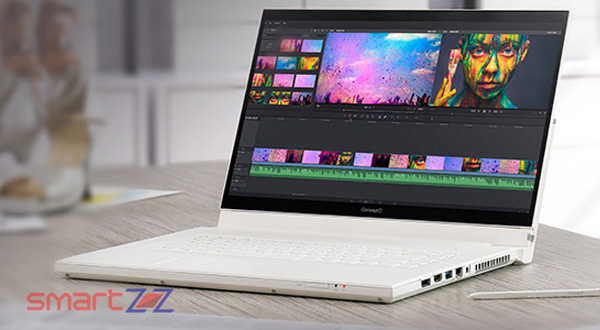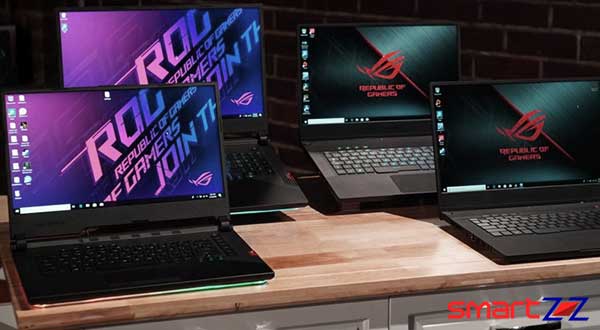Guide to Buy the Best Computer Monitor
Find out how you should select a computer monitor suitable for your work, entertainment, or gaming.

When buying a monitor, the options in today’s market can be overwhelming and confusing. You must already know that choosing the right monitor can bring significant changes to your work experience and gaming. There are various metrics you need to consider before you buy the most suitable PC monitor. Size, resolution, panel type, ports and many other features could swamp your mind and this post will help in clearing it.
If you are reading this you must be looking for a monitor upgrade or your new PC setup needs the most fitting monitor that ticks all boxes. Each person would like to prefer a unique display and this is normal when you have plenty of choices. The guide below will take you through everything you need to consider before purchasing a monitor. All attributes from dimensions to design, resolution to refresh rates, and ports to mounting are covered here. So read till the end and make a clear decision according to your will.
The Monitor Size you need
No desktop user would regret buying or using a big screen, but screens that are small can be upsetting. So always try to buy the biggest monitor that will fit into your desk space and budget. The most familiar size that people go for measures 27 inches diagonally, but if your desk has room for a bigger one lookout for the wider screens.
Always try to figure out the exact purpose of your monitor. When you are clear with what you want then it becomes easier to select a screen. People who would like a generic screen for working or schooling at home can go for the 27-inch screens that will do the job. Meanwhile, passionate gamers and more technical professionals can opt for something bigger.
Curved or Straight display?
This decision is solely based on the experience you want from the screen. Though the curved screens don’t have different resolutions than the flat screen the feel differs. Curved displays come with their own pros and cons and we have mentioned them below.
Pros of Curved display
- Gives a more immersive experience for gamers and is very friendly for single-player games.
- Reflections and glare from surroundings can be reduced when used.
- A little space on your desk can be saved and because of this ultrawide models will fit in your desk easily.
Cons of Curved display
- Field of view is narrow and only one person can watch the screen at a time.
- Best curved displays are only available in above 30-inch models so they can be expensive.
- Curved display only fits on a desk and is not suitable for wall mounting.
Resolution
Resolution of a screen is the most important attribute you need to focus when you decide to buy a computer screen. This is because technology is evolving faster than we think and we always need to be upgraded to witness good visuals and screen space. For example, at one point in time 1080P was the best resolution in the market, but now it’s just the basic.
There is a simple trick you need to follow when you choose the resolution. Just compare the numbers and don’t confuse yourself with the alphabets (UHD, QHD, FHD). Monitors with 1080p or 1440p of resolution refer to the vertical resolution. Know about the widely available monitor resolutions below and pick one of them.
- 4K/ULTRA HD (UHD): This is the most common resolution you will find in the market and the industry promotes this more. The pixels stand at 3840×2160 and this brings noticeable enhancement to the detailing. Monitors with 4K technology are more affordable than before and almost half of the media content today come in 4K. Gamers need graphics card to run their system on a 4K monitor and this can be a bit challenging.
- 8K: If you are planning to buy a monitor for the future, then you can prefer an 8K display. However, 8K monitors have high resolution that might not come to use in the present. People who think resolution is the most important thing over budget and usage can definitely go for an 8K TV.
- 1080P: This technology is the most cost effective and at the same time gives reasonable picture quality. 1080P is an ideal option for those who are buying a screen that is not too big or not too small. Though these monitors compete with 4K, their prices are very low and you can trust their performance. Just remember that 1080P will not be a great choice if you are going to buy a screen bigger than 24 inches.
While these are the most common resolution options in the market, you can also find other interesting choices.
Screen type
Most companies today still release LCD monitors that use the LED backlighting technology. This is because everyone wants a slim monitor and the power consumption is also less compared to the other technology. It would be great if OLEDs take over in the PC monitor’s market, but there are only very few OLED options. Although the move on is happening because of brands like LG.
Types of Panels.
Panel type should not be a big concern if you are going to buy a screen for general purpose. But while buying an expensive monitor it is better that the panel type is right. Basically, there are 3 types of panels used in monitors namely Twisted Nematic (TN), Vertical Alignment (VA), and In-Plane Switching (IPS). All these types have their own strengths and weaknesses that come in critical for each kind of PC user.
- Twisted Nematic (TN) is the most commonly used panel type and the visuals are emitted really well. The response rate is very fast and gamers would find this panel very friendly. Viewing angles and color quality are the downside to this panel but they are very affordable.
- Vertical Alignment (VA) is capable of giving out better colors and good viewing angles. Though their response rate looks commendable it does not reflect while used in real time. Ghosting is another problem you might face while using monitors with this panel.
- In-Plane Switching (IPS) panels are the most expensive of all but they are worth the money you spend. You can experience richer colors and also get wide viewing angles that are nearly horizontal. People who want monitors with fast response rate will not find this panel good, so gamers can prefer other panels.
Other features: Refresh rate, Mounting, Webcam, Ports.
Refresh Rate:
Refresh rate is the number of times a screen is able to update per second (calculated in Hertz, Hz). For basic comfort with no blurring and artifacts the minimum refresh rate you need is 60Hz. Non-gamers who want monitors for general usage can choose a screen with 75Hz refresh rate and others can go for something high. Monitors with TN panel technology always come with high refresh rates that are around 300Hz or 360Hz. Gaming will be smooth with this, but IPS panels also hit 240Hz nowadays so they are also a decent option.
Mounting/Stand:
This is an important aspect to consider when you are setting up a work space with more than one monitor. If you are buying a big monitor, mounting them onto a wall would be best. This can save space on your desk and viewing angle will also be good. However, people buying compact monitors can place them on their desk or stand.
Always try to place a monitor on a stand which can tilt or rotate so that you get a perfect viewing angle. Prefer monitors that come with support for VESA standard mounting options so that you will get a variety of stands. Know where the ports are placed in your monitor because you don’t want the wires to get clumsy and untidy.
Webcam:
Webcams have become very important because of the pandemic and everyone using a PC would have a meeting online. Many high-end monitors come with integrated webcam that can be used for video chats and conferences. Monitors with integrated webcam can be more useful when you use superior PC features like facial recognition and more. But remember if your favorite monitor does not come with a camera it’s not a big deal. You can always buy and fix a separate webcam that gives more privacy and upgrade options.
Ports:
Today’s monitors come with ports that were not generally found on older ones. Lately, ports like HDMI, display port, and USB-C connections come in-built and this is more comfortable for users. Though this sounds great, the problem is that you should be aware of which generation port comes with your monitor.
4K resolution monitors have some minimum port requirements. You need to use HDMI 1.4 at the very least and to support 60Hz refresh rate you must have HDMI 2.0. Though HDMI 2.1 is the latest version of the standard, if you want higher resolutions for gaming DisplayPort is recommended. Display 4.1 monitors can manage up to 8K at 60Hz and 4K at up to 200Hz, hence display port 4.1 is a better option compared to HDMI.
Share on:




